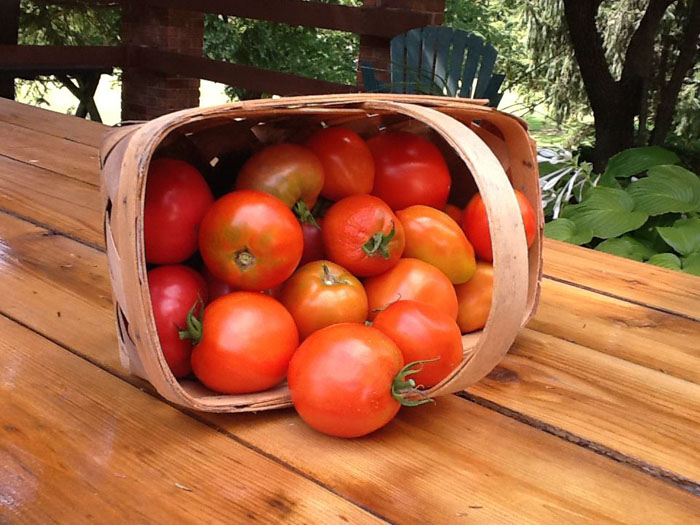Yarden column
Published 11:30 am Saturday, August 6, 2016

- Tomato harvest
Sponsored by Thomasville Garden Club Inc.
August weather
Trending
August is another hot and humid month, usually with plenty of rainfall. If you have been thinking this summer is hotter than usual, you are right. University of Georgia officials report that monthly temperature averages in June and July were above normal. Even nighttime temperatures have been higher than normal. In fact, UGA says 2016 is now in the record books as one of the top 10 years with the most consecutive days of temperatures over 95 degrees.
In addition, on one day last month – June 7 – Thomasville recorded 5.27 inches of rain (the result of Tropical Storm Colin). In comparison, homefacts.com shows Thomasville’s average rainfall for the entire month of June is 3.94 inches.
UGA predicts above-normal temperatures are likely through September. Homefacts.com reports that, historically, Thomasville’s daily average temperature in August is 81.87 with the maximum average and the minimum average being 91.57 and 72.13, respectively. And, weatherspark.com lists the following daily highs and lows: Aug. 1 – 93 and 74; Aug. 11 – 92 and 74; Aug. 21 – 91 and 73; Aug. 30 – 90 and 71. I think it will be interesting to compare all of these numbers to our actual temperatures this month.
Georgia’s pollen season, which peaked in early to mid-April and receded in mid-May, unfortunately resurfaces in mid-August. A popular pollen counting website is www.pollen.com. By typing in your ZIP code, you can get the most up-to-date pollen count and a list of the most prominent types of pollen in your area.
Heat stress
Heat can cause real stress on gardeners’ bodies so please monitor yourself while you are working outside. Here are some suggestions to minimize heat stress:
Trending
• Limit your work time outdoors.
• Move around your yarden in order to be able to work in shaded areas.
• Avoid peak heat hours of the day: between 2 and 6 p.m.
• Take frequent breaks to cool off.
• Drink plenty of water before, during and after “yardening.”
• Avoid caffeinated beverages and alcohol as you work. These are diuretics; they make your body lose water.
• Wear light-colored, loose-fitting clothing, a hat, sunglasses and sunscreen.
In bloom
Most annuals will bloom right up to our first frost, if we can keep them healthy. Cut back faded annual flowers by half and then water and lightly fertilize them to get a second growth of blooms after about two weeks. On the other hand, if your annuals are too far gone, it is a good idea to pull them out and replace them with such heat-lovers as zinnias and melampodium.
Take note of which flowering plants have done well this very hot summer and then plan to use them again, knowing they are survivors. Lantana, pentas, butterfly bush, plumbago, Mexican heather, rudbeckia, gloriosa daisy, purple coneflower and Mexican petunia are highly recommended for prolific blooming, not only during our hot summers, but well into autumn.
August yardening
Harvest – A few years ago, one of my Pennsylvania friends, Paula Quarzo, sent me a photo of one August day’s tomato harvest. I told her I liked it so much that I wanted to submit it with my August Yarden column in the future. I am sure she has forgotten about it, so – surprise, Paula. I cannot wait to send her a copy. Dear readers, I hope you, too, are enjoying the “fruits” of your yardening labor.
A suggestion from UGA: “When no rain falls from above, providing water from below is the best method for plants.” Sprinklers work but they waste water through evaporation. The preferred method is applying water slowly and gradually from some type of drip method like a soaker hose.
Pristine Landscapes
Whenever I fly, I am always so happy to see all the great areas of undeveloped green upon our planet; therefore, I was unprepared for the following news from earthsky.org: “If you’re hoping to escape civilization and head into an unaltered wilderness, you might be surprised to learn it no longer exists on Earth,” a study from the University of Oxford reports. It states there are no longer any areas that have escaped the impact of human beings. There is too much information to include in this column. If you want to read more about it, Google the following: earthsky.org/earth/pristine-landscapes-dont-exist-says-study. Sadly, green does not equal pristine.
Survey Request
Our county agent, Andrew Sawyer, has asked that I inform you of a UGA entomology survey regarding an invasive and crop-damaging insect called the brown marmorated stink bug. For an accurate picture of the extent of the problem, UGA needs responses from as many homeowners as possible. The survey should take no more than a minute or two to complete since there are only 4 questions. Please follow this link to participate in the survey: HYPERLINK https://www.surveymonkey.com/r/PZY6RLX https://www.surveymonkey.com/r/PZY6RLX.
Quote of the Month
August is like the Sunday of Summer. – GeniusQuotes.net
REMINDER
SCHOOL HAS STARTED. WATCH OUT FOR SCHOOL CHILDREN.
Pat Pankey writes this column for Thomasville Garden Club, Inc. as a service to the community. Thomasville Garden Club Inc. welcomes new members. If you are interested, contact Membership Chair Karen Wilks at 226-0312 or any current member. The Garden Center has a library of books about gardening that are available not only to garden club members but to the general public. To access the library or to visit the Garden Center, contact Julia Singletary at 226-5291 (the Garden Center telephone number) or any current member. You may contact Carla Inman at 229-403-6048 if you are interested in renting the Garden Center for an event. The Garden Center is always open to the public on the Wednesday before the first Friday of every month, September through May. Visit our website at HYPERLINK “http://www.thomasvillegardenclub.org” www.thomasvillegardenclub.org and find us on Facebook.






